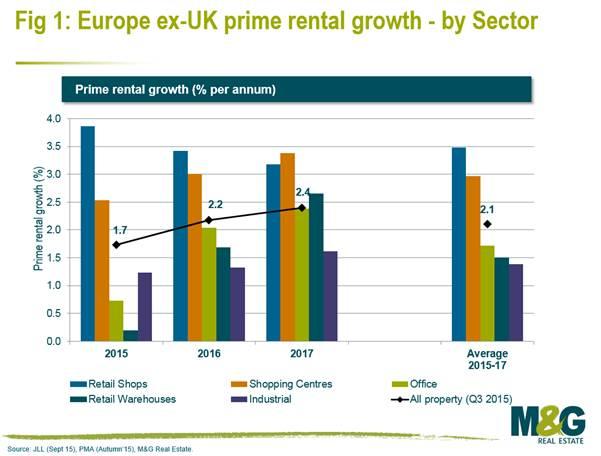The eurozone has posted nine consecutive quarters of economic expansion and is on track for more, according to M&G Real Estate’s ‘Continental European Outlook’ report. Following the US and the UK into a phase of solid economic growth, rental growth is improving and there are opportunities to boost returns by investing in the region’s affluent second tier cities.
Rental growth is gradually picking up across the region, driven by GDP growth and consumer confidence. Disposable incomes are on the rise and the labour market is improving which bodes well for real estate – the retail sector in particular. The rise in office-based employment correlates with the strong demand for space in undersupplied central business districts and further rises in prime rents are expected over the next three years in the prime CBDs of Barcelona, Madrid, Stockholm, Copenhagen and Munich.

European investment volumes are set to beat last year’s high, with capital flows reaching €67bn in the first half of the year, up 33% from the same period the precious year. US investors are increasingly active across Europe with capital flows in the first half of 2015 reaching 70% of the volumes seen from the previous year.
Vanessa Muscarà, senior research analyst, commented: “Continental Europe is now seeing solid economic growth, with buoyant consumer demand, rising employment and improving lending conditions.
“Heightened occupier demand, driven largely by retailers upping their physical presence, is having a positive impact on rental growth across the region, with prime high street shops offering the best prospects for rent rises in the near term. We expect other sectors to do well over the coming years, resulting in an attractive investment climate for investors looking for a strong income stream at a time of low bond yields and base rates.
“With record capital flows targeting Europe’s gateway cities, encouragingly, we see the opportunity to further boost returns by looking further afield and investing in affluent second tier cities which offer greater scope for future yield compression.”















